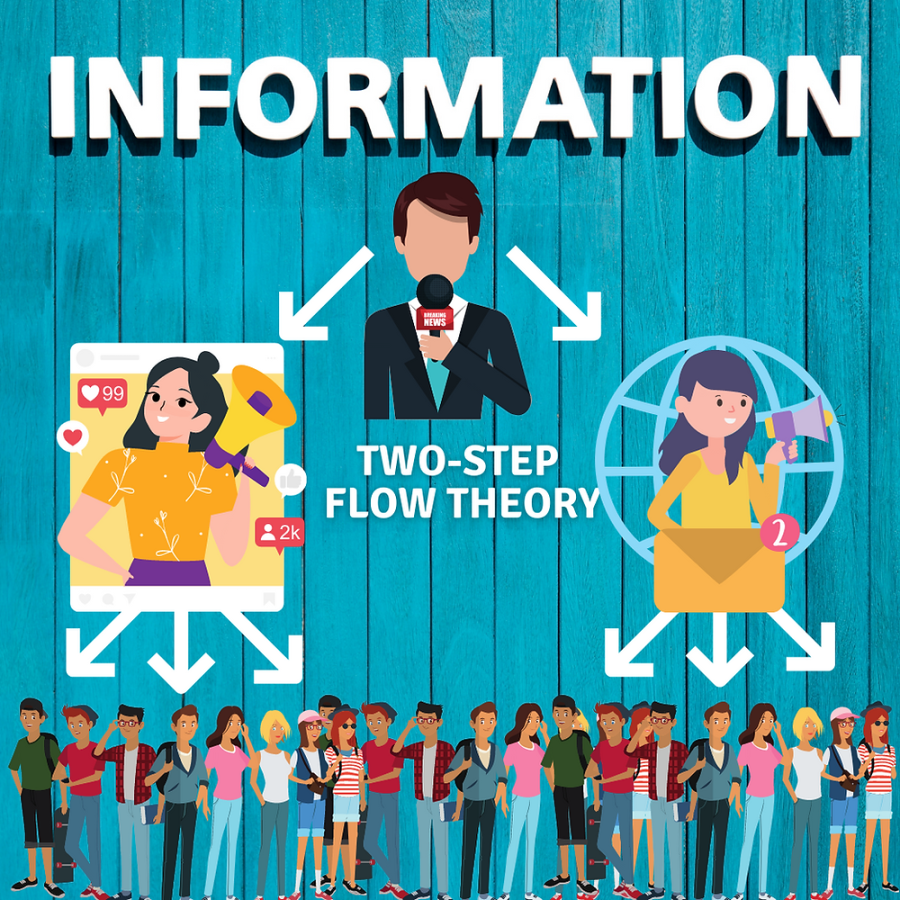About the two-step-flow ’╝Ü
The two-step flow suggests that most people are not directly influenced by mass media, but rather go through a two-stage process in which information is first absorbed by “opinion leaders” on social media, and then disseminated by “opinion leaders” to more “opinion followers” with their interpretations. opinion followers”. Opinion leaders are initially exposed to particular media content and have considerable influence on social media.
So bloggers can influence a brand’s visibility on social networks and thus promote it to a wider audience. Of course, there is a potential viral effect to this.
Bloggers are powerful, they can influence the internet by giving advice and insights using short videos, blogs, etc., which can influence searches and purchases for the brand. By actively interacting with consumers, bloggers foster relationships with their followers, thus earning their trust. Further informing consumers about the brand’s content and infiltrating the brand into their lives little by little. In addition, bloggers provide a platform that facilitates communication between consumers and potential consumers and brands. Bloggers play a crucial role in brand promotion.

This brings us to a hot story in China some time ago, the “blogger Li Jiaqi and Chinese cosmetic brand Huaxizi story”. When the blogger was selling goods live on Taobao (a website similar to Amazon), he introduced an eyebrow pencil at 79 RMB a piece, a netizen left a comment that it was getting more and more expensive, and the words that followed deeply hurt the consumers, he asked them to reflect whether they had worked hard at their jobs instead of complaining about the price of the eyebrow pencil here. After netizens’ accounting eyebrow pencils cost more per gram than gold. Before this happened, there was an extremely high level of stickiness and loyalty between this blogger and the consumer, and the consumer could be said to trust the blogger completely. But as the blogger’s status rose, as the head anchor, he was out of touch with the masses and could no longer empathise with the majority of consumers.
summarize’╝Ü
There are pros and cons to social media for brands, it can make a brand widely known quickly and it can also make a brand quickly reviled. Bloggers should always think critically based on their professional ethics and not be attracted by money, fame, and fortune and do things that go against their professional ethics and deceive consumers.
- Bloggers should not hide anything from their followers and should explain to their followers how they relate to the brand.
- Bloggers should have strict control over the brands they work with and the content they work with should be valuable to the consumers.
- Bloggers should be aware of the content that their followers are interested in. Close interaction should be maintained to understand the consumer goals and caliber of the audience and should not be out of touch with the masses.
Reference’╝Ü
- Flynn, L.R., Goldsmith, R.E. and Eastman, J.K., 1996. Opinion leaders and opinion seekers: Two new measurement scales. Journal of the academy of marketing science, 24, pp.137-147.
- Uzuno─¤lu, E. and Kip, S.M., 2014. Brand communication through digital influencers: Leveraging blogger engagement. International journal of information management, 34(5), pp.592-602.


I really enjoyed reading your blog! The example you mentioned about Li Jiaqi and Huaxizi perfectly explained the power that bloggers have and how they can influence consumer behaviour and that they have to be very careful about brand promotion and the potential risks of losing their audience. Your analysis on transparency and staying connected with the audience is one of the responsibilities or consequences (for some people) that come with being a blogger. Great work!
This case study is exceptionally practical and provides a deeper understanding of the theory for anyone familiar with the subject matter.
Nice, your writing has taught me a lot of new things. Your example-Jiaqi Li, also helped me to understand a lot.